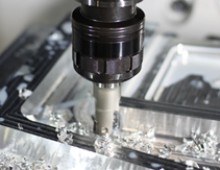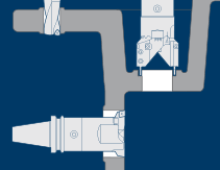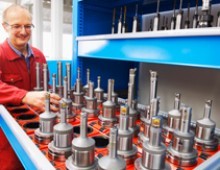Boring with the Right Angle
While there are many factors to consider when specifying the components for a modular boring tool—boring head, tool size, number of extensions and machine spindle adapter—these are not the most important factors when it comes to boring success.
There are two additional considerations—insert holder and lead angle, both of which should be selected based on the application.
Conventional wisdom says to use the longest lead angle possible, thinning the chip because it allows you to increase speeds and feeds. We take a different approach. We prefer lead angles closer to 90 degrees because they apply the least amount of radial pressure against the tool. This is much more effective to combat the chatter and vibration that compromise part productivity and tool life.
Read the latest Depth of Cut column in Fabricating & Metalworking by Jack Burley, vice president of sales & engineering, as he discusses the advantages to matching the right lead angle to the right application.

















Did you find this interesting or helpful? Let us know what you think by adding your comments or questions below.